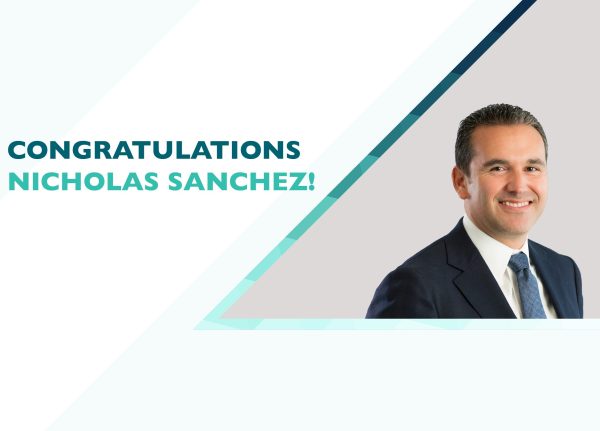We can advise you on, and help you apply for, advantageous credits and incentives.
We regularly uncover opportunities, for our clients, to save on their federal, state, and local taxes – helping them to reduce costs and generate positive cash flow.
Below is a list of some common credits and incentives.
RESEARCH & EXPERIMENTATION TAX CREDIT
The R&D Tax Credit is a general business tax credit under Internal Revenue Code section 41 for companies that incur research and development costs. This credit covers Qualified Research Expenses such as (but not limited to):
- Wages paid to employees for qualified services
- Supplies used in the R&D process
- Research expenses: contract research expenses paid to a third party; basic research payments made to qualified educational institutions and some scientific research organizations
The PATH Act made two changes to the R&D tax credit – these changes went into effect for taxable years beginning on or after January 1, 2016:
- Eligible small businesses (ESBs) can use the R&D tax credit to offset their alternative minimum tax (AMT) liability and qualified small businesses (QSBs) can use the R&D tax credit to offset the FICA employer portion of their payroll tax.
- Startup businesses with gross receipts of less than $5 million and no federal tax liability can now also apply for the R&D tax credit.
MOTION PICTURE AND TELEVISION PRODUCTION CREDIT (California)
The California Film Commission (CFC) administers the Film & Television Tax Credit Program which provides tax credits based on qualified expenditures for eligible productions that are produced in California. The CFC will allocate $330 million towards the program each fiscal year; the program ends June 30, 2020.
Credit allocations are categorized as such:
Relocating Television Series: Any series, with $1 million per episode budget minimum, that filmed its most recent season outside California may qualify for a 25% non-transferable credit.
Independent Films: Films with a $1 million minimum budget may qualify for a 25% transferable credit.
Feature Film, Movies-of-the-Week and Miniseries, New Scripted Television Series, TV Pilots: These projects may qualify for a 20% non-transferable credit. ($1 million minimum budget for Feature Films, $500,000 minimum budget for M-O-W and Miniseries, and $1 million minimum budget for 40+ minute New Scripted Television Series and TV Pilots)
Projects may apply for an additional 5% credit for (total credit not to exceed 25%):
- Expenses pertaining to original photography incurred outside the 30-Mile Studio Zone
- Music Scoring and Music Track Recording
- Expenses related to visual effects work that represents at least 75% of the VFX budget of a qualified motion picture in California
To claim the credit, qualified taxpayers must apply to the California Film Commission.
CALIFORNIA COMPETES TAX CREDIT (CCTC)
Businesses that want to locate or stay and grow in California may be eligible for the CCTC. Businesses must commit to certain employment or project investment requirements (also referred to as “milestones”) as part of the credit agreements. The amount of the credit will be based on factors such as (but not limited to):
- The number of jobs the business will create or retain
- The compensation by the business to its employees, including wages, benefits, and fringe benefits
- The strategic importance of the business to the state, region, or locality
- The opportunity for future growth and expansion in this state by the business
- The overall economic impact
Tax credit agreements are negotiated by the Governor’s Office of Business and Economic Development (GO-Biz) and approved by the CCTC Committee. This credit is available until January 1, 2025.
COLLEGE ACCESS TAX CREDIT (CATC)
For taxable years 2017-2022, the CATC is available to individuals, business entities, and insurance companies that contribute to the CATC Fund – which is administered by the California Educational Facilities Authority (CEFA). The credit is 50% of the amount you contribute each taxable year, but you must obtain a certificate from CEFA before claiming the credit on your state income tax return.
LOW INCOME HOUSING TAX CREDIT (LIHTC)
The LIHTC is a nonrefundable, federal housing tax credit awarded to developers for the construction or rehabilitation of qualified low-income housing projects; it is administered by state housing finance authorities.
The process of awarding LIHTCs begins at the federal level – from there, each state receives an annual LIHTC allocation based on population; then, state housing agencies distribute these credits to developers according to the federally required, but state created, allocation plans.
There are two types of LIHTCs, depending on the nature of the construction project:
- 9% credit*: generally reserved for new construction; delivers a 70% subsidy over 10 years
- 4% credit*: typically used for rehabilitation projects and new construction that is financed with tax-exempt bonds
*Each year, for 10 years, a tax credit equal to roughly 4% or 9% of a project’s qualified basis (cost of construction) can be claimed.
The program delivers a subsidy equal to 30% of the present value of a project’s qualified basis in the case of the 4% credit, and 70% in the case of the 9% credit.
WORK OPPORTUNITY TAX CREDIT (WOTC)
The WOTC is a Federal tax credit available to employers who hire individuals from eligible target groups with significant barriers to employment.
Target groups include:
- Veterans
- TANF recipients (Temporary Assistance for Needy Families)
- SNAP (food stamp) recipients
- Designated Community Residents
- Vocational Rehabilitation Referral
- Ex-Felons
- Supplemental Security Income Recipients
- Summer Youth Employee
- Qualified Long-Term Unemployment Recipient
WOTC reduces an employer’s cost of doing business; it can reduce an employer’s federal income tax liability by as much as $9,600 per employee hired. (WOTC tax credits range from $1200 – $9,600 and there is no limit on the number of individuals an employer can hire to qualify to claim the tax credit.)
The tax credit is equal to 25% or 40% of a new employee’s first-year wages, up to the maximum for the target group to which the employee belongs. Employers will earn 25% if the employee works at least 120 hours and 40% if the employee works at least 400 hours.
The appropriate forms must be filed with the state’s WOTC Coordinator within 28 days from date of hire in order to claim the WOTC.




